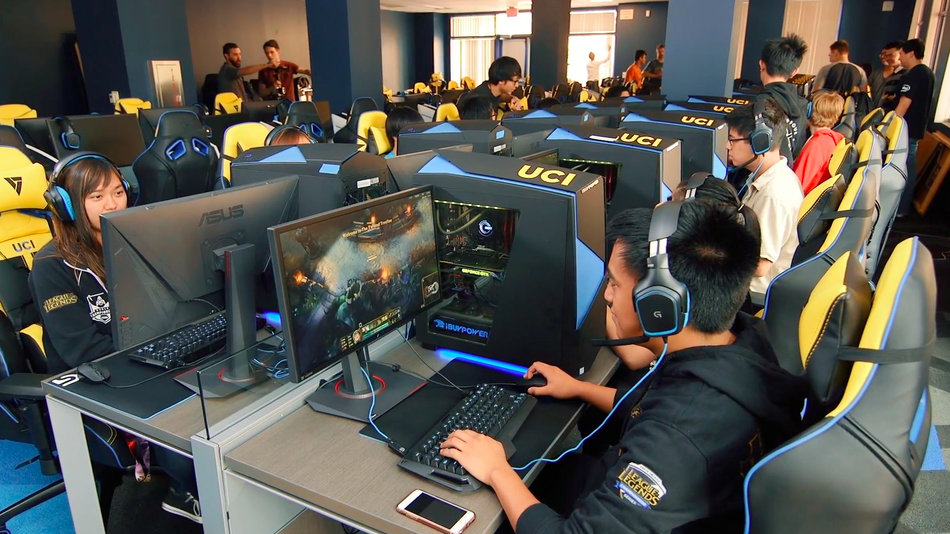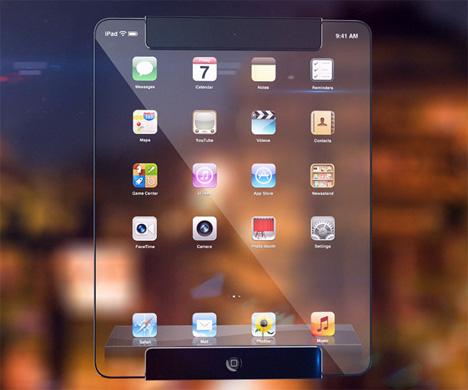Why Not?

I know people are mocking this, but my opinion is “who am I to judge?” If anything, I’m surprised it has taken so long.
The idea of virtual or holographic companions has been the stuff of science fiction for some time now. Cortana from Halo is one of the most well known, and now one of the most well-realized in her (its?) implementations within the Windows ecosystem, and the movie Her expanded on this very idea in a very moving and relatable way, presenting it as an evolution of society and technology that are merging closer and closer together. Of course, we can’t forget about Siri who, in fairness, was doing it to us first. And they’re hardly the only ones.
So now, a company called Gatebox has developed a sort-of holographic companion (it uses rear projection, a common technique for pseudo-holograms) that can act as a regular virtual assistant, however this one can be more…personal and adds a visual component that we haven’t seen before. It sounds unnerving at first. Taking on the appearance of an anime-inspired girl named Azuma Hikari, and living in a tank on your desk, she can provide not just assistantship, but companionship as well.
That’s right, for around $2,700 she will remind you of important events and dates and appointments, but she has been imbued with her own dreams and desires, hopes and wishes, just like a person. She’ll send you text messages, ask how your day was, tell you about herself and her thoughts. She can turn on lights and appliances, and connect to the Internet and talk about the weather or events or sports, or whatever else you’d like.
Most, but not all, articles talking about it have mocked it and its development, but I just can’t criticize it. it’s for release in Japan with no North American or European release in sight, and in my opinion that speaks to the Japanese culture, one of which I am very fond, but they dedicate themselves so much to work and school that there is little time for investment into personal relationships. This was designed and developed in part as a response to that, to give (generally) men who would otherwise be wanting for companionship a way to have someone with whom they can interact. People have pets for that very reason, so if someone doesn’t mind a holographic anime girl, then why not?
Perhaps there will even be additional characters. Maybe a snarky robot, or imp, or angry Australian guy, or a long-haired heavy-metal fan who converses in the same vernacular as I, or a sentient toaster; the possibilities are endless. For many of us, something like this would be a pure novelty, but if someone is genuinely lonely, or perhaps has an aversion to crowds or social spaces, or simply doesn’t have the time currently to invest in relationships, then I can’t find fault. If there is a demand for this type of technology, then as I said before, why not? Who am I to judge?
I genuinely encourage you to visit their website, it’s actually well-designed and gives you an almost first-person view of the device. I’m strangely interested in where this technology goes, and what its development says about us as people and a society.
Here’s the promo video. Make your own judgement.
A Successful Game Development Class

AUTHOR’S NOTE: Because many of the groups mentioned in this article may continue development of the games mentioned and with respect to their work and designs, I am limited in what I can show of many of them.
This quarter, I was asked to take over our department’s ‘Computer Game Development’ class from another faculty who was retiring. I guess it had something to do with that donation I made, but I was happy to do it, the retiring faculty recommended me personally, and offered all his materials for my use and adoption.
With absolutely no disrespect meant to him at all, I learned subsequently that he wasn’t actually a gamer, he was a programmer who developed this course as more of a technical overview of some coding techniques that could be applied to games, such as client-side prediction and some GPU tricks. Ultimately, much of the class was given over to project development time as opposed to formal instruction, as is common in a project class.
I decided to take the class in a different direction. We did talk about those things and other technical issues (and Thursdays were scheduled as project times as had been done before me), however as I always tell all my students, ‘you can’t develop technology in a vacuum.’ Or in this case, games. In other words, there is so much more to developing games than writing code and using unity. There are artists, musicians, writers (I made a HUGE deal about writing for games), level designers, and on top pf that, as my students also know, an understanding of how the industry and games themselves evolved is important; that context helps inform your decisions today.
So we talked about history, we talked about writing, we talked about level design, we talked about morals and ethics, we talked about the engines available today as opposed to the assembly languages available back when, we talked about character design and plot progression and player investment and balance and honing. All the while, students developed their own projects.
It is still a project-based course, as it was before I came along. Students are expected to develop a game using any platform and approach they wish, as long as it showed technical prowess and creativity in design. It is expected that students in this class have a background in Python and Java at least, although most have solid C# backgrounds as well.
My main directive to the groups was “Don’t build an ashtray.” I tell that to a lot of my project classes. You see, when I was in high school, I took a woodshop class, and the teacher – Mr. Cagle – went around the room asking each student what they would like to build that session. The responses were thoughtful; one kid wanted to build a full archery bow, another a roll top desk, and yet another a soap-box racer kind of thing. However one kid, when asked, said with his head down “I don’t know, I’ll build an ashtray.”
An ashtray? AN ASHTRAY? Everyone in the class had these great ideas, ones they had thought about and developed, but this guy who I guess didn’t care or wasn’t interested or wasn’t motivated or perhaps just lacked the fluid thought necessary could only come up with an ashtray, a single-component item that could be made out of clay in about two minutes. He had an opportunity to create something really interesting and unique and that’s all the better he could, or was willing, to do.
I always remembered that kid, and so even now I tell my project groups to not be that kid, don’t build an ashtray. In other words, be creative, be unique take this opportunity to explore your ideas and test your abilities.
They did not let me down.
One group developed a game about someone suffering from Irritable Bowel Syndrome, and the entire game had a timer that counted down continuously until a bathroom was found, which only served to reset the timer.
Another group developed a platform game in which the player had to switch back and forth between light and dark worlds in order to traverse levels. Another involved a pirate with a hook hand swinging through levels to gather gold and still another group created a game in which two brothers navigated through their own individual levels, with the effects of what one brother did (stopping time or causing rain) manifesting at the same time in the other brother’s level. And there was also one that was pseudo-text based and emulated a greenscreen of yore, with the player using actual Linux commands to solve some of the puzzles and minigames.
There was also a mobile game about a dog fending off a flea attack, Harambe escaping his captors, some flashlight-based games, a dungeon crawl, an RPG with unconventional characters, a ghost coming to terms with his infamous past, and a fantastic card game in which you navigated a 3D town and the group designed all the card graphics using a stained-glass aesthetic which was understated yet beautiful.
It was also required that teams develop websites and promotional materials for their games, and even many of those were outstanding. Some allowed for the downloading of demos and other materials, while others were more informational.
One group, pictured in the header and below, developed a party game so complete and well-polished that I felt, and from what I heard others did as well, that with just a little more work it could go up on Steam or the Xbox/PS stores. Because of that, the name of the game had to be blurred out.
At the end of the quarter we held a showcase that was open to the public, and in which every team was able to show off their creation. It was a great success, especially considering all 121 students, 21 teams, were crammed into the same moderately sized conference room. It was hot in there!
A couple of the games are playable online, so I’ll link to those here:
CoinUp, a game in which two players remove coins from either end of a row, with the goal being to have more money at the end of the session. It can be played as one game, best of three, or best of five, and the powerups add a tense twist to the action. It’s a simple game that can be frustrating in a just-one-more kind of way. EDIT: No longer online, I’ll see about the executable.
Another is Quadris, which is a Tetris clone in which gameplay takes place in each of the four compass points, and has you constantly switching perspective. It’s hard to explain but a blast to play. You can play it here.
I’m very proud of all of them; despite the nature of the course it’s very stressful as they only have 10 weeks to design and develop their game. Regardless, they all came though magnificently, and while I certainly learned that some structural changes will have to be made for next time, I’m already looking forward to what the next class is able to create.
Thank you Outlook Calendar!

Since Thanksgiving is only two days away, I would normally be writing some interesting and tech-oriented post about some turkey-themed technology or technology we’re thankful for (or not). However this year I thought I would instead briefly mention a curious notation on my Outlook Calendar. It’s not a huge thing, or a bad thing, just…curious.
It properly labels November 24th as Thanksgiving Day. However it labels November 25th as the Day After Thanksgiving Day. How strange. Do we not know that? It doesn’t label the 26th as the Day after Christmas Day, or July 5th as the Day After the Fourth. The strangest thing of all is that November 25th does actually have a colloquial name associated with it: Black Friday. The ‘Day After Thanksgiving Day’ just seems so matter-of-fact and odd to me, I’m having trouble processing its purpose!
Maybe I’m just reading too much into it. Or maybe Microsoft is playing the best prank ever. I don’t know. Where’s my turkey?
And here comes PowerShell!

I love the DOS prompt. I really do. I have books about it, watch videos about it, and teach HCI students about how many of the conventions used in the Graphical User Interface (e.g. cut/copy/paste) are taken from the command line, which were themselves taken from manual conventions used with typewriters (when typists made an error, they would often type the intended word on a separate paper, cut it out with an X-acto knife, and paste it over the mistyped word on the original document).
Although I frequently criticize techy types for being unnecessarily proud of their cult-like, obtuse, user-unfriendly platforms that require deep-dive understandings of underlying technology to get them anywhere close to working (I’m looking at you, FreeNAS and DD-WRT), I have to give the command line credit as it was all we had back then, we didn’t use it for bragging rights, and it worked well enough at the time while requiring some understanding of the underlying machine and software architecture.
However, it appears that the command line is being pushed to the back row. You’ll notice in the image below, which is of my very own Windows 10 Start context menu which appears when right-clicking on the start menu, there is the option for command prompt and command prompt admin.
In the following image, though, taken from a PCWorld post about the most recent Windows 10 Insider Build, Build 14971, you can see that the entries for command prompt are no more, and instead have been replaced with PowerShell.
What is PowerShell you might ask? If you were to just look at it, it might not look all that different from a standard command line. In fact, it IS a command line. However, rather than carrying out one command at a time as is typical with traditional command lines, hence their name, PowerShell allows for a host of capabilities that would be very difficult – although not impossible – via traditional command line commands. It allows for system and network/remote management, as well as scripting functionality supported by the .NET platform. It has many functions, which is also why the name PowerShell is both accurate and misleading.
You see, a shell is a command line. We’ve been using shells forever now, they even have allowed for the authoring of some basic scripts called batches in which a bunch of commands run all at once, but they were also very limited in the universe of the GUI. When a criminal attempts to put malicious code into or onto a system in the hopes it will run, that is often known as shellcode because it provides command-line access to the compromised system (if you’re interested, this is most commonly done through buffer/stack overflow attacks, of which there are many different kinds). Even PowerShell itself has been around for a long time. These types of interfaces have been a staple of computing since the birth of the PC and before.
PowerShell is powerful, and has extensive capabilities that make it as useful as a GUI if you know how it works. Why not just use the GUI? Because a command line interface doesn’t use nearly the resources of a GUI, can run on a low-power system, gives much finer and more focused control than a GUI, and a command line interface won’t crash. You can see that I appreciate the power of the command line, and while I have nothing against PowerShell specifically, I also see it as the end of an era. The DOS prompt was so insanely unintuitive, yet comparatively simple as well; a true paradox. In PowerShell’s defense, here is a screenshot from the carlwebster.com blog showing it running a script that displays firewall rules. And that is just one example of the infinite amount of ways in which it can be used.
Apparently ‘Command Prompt’ can be brought back to the context menu through taskbar personalization settings so I may do that when the update finally rolls out, but I also want to give powerShell a chance – I haven’t used it that much but use the command prompt extensively, so who knows, maybe it will all be for the best. I’m approaching it with an open mind, and I’ll post my thoughts here when I’ve had the chance to work with it for a bit.
I have finally hit the big time (potentially NSFW, but not really)

Has it really been a month since my last post? How time flies when you’re insanely busy and out of town for a week on top of that. My apologies, but I assure you, this post will have been worth the wait.
I know that headline can be interpreted several different ways and may lead to some raised eyebrows, however it’s not as risque as it sounds. I’m not even sure the ‘NSFW’ tag is necessary, but better safe than sorry I suppose. About a month ago – and I meant to post this earlier but just couldn’t find the time – I was the featured expert in an article in Playboy magazine about the evolution of vibrating game controllers titled ‘The Bizarre History of Vibrating Controllers: VR Precursors, Occasional Sex Toys.’
I’m featured pretty prominently in the piece, and it really is a well-researched and relatively complete examination of the topic, however it is Playboy, and as you can probably tell from the link title the article veers into the, well, it veers into what you’d expect a Playboy article to veer into, even though the magazine no longer features women in birthday suits.
But I recommend it. If you don’t mind some very mild prurient evaluation, meaning absolutely nothing even close to x-rated but briefly talking about the adult potential of such controllers towards the end, it’s an informative read and respectful of its topic.
Come on Bing, step it up

Everyone knows I am a big fan of Microsoft, and I am especially happy with the direction the company has recently gone; releasing their Office suite on Android and even iOS, innovating with their Surface and SurfaceBook line, I even loved their Windows phone, although I recently had to give mine up, and of course the HoloLens. I have experienced it, and it’s pretty incredible.
That also means I use Bing. Not just for the rewards program it has, which is pretty nifty, or for the nice pictures it has on its main page, and certainly not for the results which are often years old and barely relevant. No, I also use it as a form of rebellion. Bing is like the kid who’s not as popular as the other kids, but it’s because he doesn’t care that actually makes him more cool. If the others are more popular so be it, Bing does its own thing its own way.
Don’t get me wrong, I use Google a lot. But I do that because I have to. You see, although I’m a big Microsoft and Bing fan, the fact is their results just don’t work out all that well for me. The biggest problem I have with Bing results is that they are rarely timely. They are, almost always, from at least seven years ago, even for tech based results, and seven years can be a lifetime in terms of technological development. I don’t know what Bing’s obsession is with providing me results from 2009.
Other times, I’m not sure what to think.
I was reminded of this while doing an image search for the post below regarding transparent screens. I was looking for images of transparent screens being used in movies, and I typed in “Avengers transparent screens” and “Avatar transparent screens.” The results were remarkably different, and remember that this was an image search. Below, I have posted a screencap of the image-search results from Bing, and then again from Google. Whichever you prefer, it’s pretty clear whose search algorithm is giving the most relevant results.
For the image search “Avengers transparent screens,” here are the results from Google (Top) and Bing (Bottom).
For the second example, I carried out the image search “Avatar transparent screens,” and as above, here are the results from Google (Top) and Bing (Bottom).
I prefer the photo layout of Bing, and how if you scroll up in the search results the search bar automatically appears, however the results are clearly quite different. It sometimes provides accurate results, but I was shocked by how off the mark this was.
Strangely, I was unable to find any scholarly research comparing the two engines and their results, however I did find this article from 2011 showing, via Internet research firm Hitwise, that Bing’s results are more accurate than Google, whereas a more recent Lifehacker article from 2015 crowns Google the champ but not by an overwhelming margin. There seems to be no clear winner (I did notice that a Bing search on who is the better search engine overwhelmingly returned results favoring Bing, whereas Google was more neutral). Ironically, if you search “Bing Google” in Bing, the first result is Google and the second is Bing.
This is clearly not a comprehensive evaluation of search results, it is merely something I noticed while writing my previous post. Bing does give relevant results quite often, and I prefer how it presents results of certain focused searches by providing relevant info or data (time, scores, definitions, flights, etc.) right at the top, and its Santa-tracking on Christmas is second to none. I suppose I’ll just have to keep using both.
Panasonic introduces a transparent TV

Transparent screens are nothing new, at least not in science fiction. The most well know, I would argue, is the interface from Minorty Report, as seen in the header image, but there have been many others. Consider, for example, the PADD (Personal Access Display Device) from Star Trek, which was only made transparent recently. Also, they weren’t very good at naming things.
There is also the tablet being used by Liara from the popular video game Mass Effect 3.
And let’s not forget Avatar. Or The Avengers. Or The Empire Strikes Back. Or Futurama. Or even this thing that lets you interact with the screen from the front and the back. There were even rumors floating around that Apple was going to be introducing a transparent iPhone and iPad, with some going so far as to render their interpretation of it.
It seems the main point behind these is to make them look more future-y, however while they are certainly technically feasible, their practicality is open to debate. A transparent screen leaves open whatever you’re doing to the eyes of everyone around you, there would be no privacy and a serious lack of security.
But what about a TV? A transparent TV that you use for watching, but when you’re not watching it, it just…disappears? Fades into the decor of the house, perhaps, without actually having to motorize it or hide it somewhere.
Panasonic has done just that, developing a TV using OLED technology, in which pixels give off their own light, in order to create a TV that is legitimately watchable while in use, and almost completely transparent when not. The catch is that the screen is made from a fine mesh which is then overlayed on actual, transparent glass. You don’t see the mesh when it is off, and you don’t notice it when it’s on. Genius.
It’ll be a few years before we see any type of commercial availability, but in the meantime, enjoy a gif of the process as seen on The Verge, who, I might add, really don’t want you downloading their gifs.
Nike announces self-lacing shoes

What a time to be alive! Nike has announced that it’s HyperAdapt self-lacing sneakers will finally, FINALLY, be available on November 28th. You can read the press release at this link.
I’m not sure why, but there seems to be more hyperbole around this than is normal for a product release, even in the press announcement. For example: Nike’s own press release, linked above, is titled “Nike HyperAdapt 1.0 manifests the unimaginable.” Transworld Business titled their article about these shoes (and I am not making this up), “Transcending time, space, and our perception of reality, Nike has brought us the shoe that no one that (sic) possible outside the realms of science fiction: the HyperAdapt 1.0.”
Let’s not get carried away. It’s a neat thing, but it’s not a future-breaking invention that will unite the world in harmony. Also, I wonder if “self-lacing” is the right term. You see, they don’t actually lace up like a ghost is tying your shoes. Rather, they tighten; a motor in the base of the shoe pulls what looked like pre-laced laces tighter until sensors deem they’re tight enough, and of course the person wearing them can make adjustments if necessary. The motor that does it is rechargeable, and there are lights in the shoe to indicate the status of the charge.
Here’s a video about it, one that goes beyond mere promotion into the realm of world-saving, but these kinds of things have started to concern me. Is this a sign of encroaching laziness, or a useful feature that we need? I can tie my shoes, and do so to just the right amount of pressure. Do I need a self-lacing shoe? With self-driving cars, self-cooking food, self-playing guitars, and whatever else doesn’t need a human, where does it end? I know it’s just a shoe, but that’s exactly why it’s concerning.
And what happens if the motor malfunctions? Or the battery dies? Oh, the humanity!
University of California, Irvine, becomes leader in eSports

My employer, the University of California, Irvine, has become the first university to open an eSports arena, which is really just a big room with a bunch of high-end PCs in it for networked game play, and have a top-ranked League of Legends team that will be awarded scholarships for their participation.
Other colleges and universities have had school-sponsored eSports teams before; Robert Morris University did so back in 2014, and others followed suit, however the arena is what sets us apart. A dedicated gaming facility created with the blessings and support of League of Legends developers Riot Games and machines supplied by boutique PC source iBuyPower (terrible website design trigger warning).
The arena can also be used by students who just want to do some gaming. And because we’re a university, there will be many, many opportunities for game-based research, something my own department does from many perspectives.
The official opening will be on Friday, September 23rd, and they are expecting about 1000 people. I’ve been in that room and that area of campus, and that would be quite the crowd, but it speaks highly of what they’re doing and what they’ve already accomplished.
Destroy your stuff with just a USB stick

Hey, now this sounds fun! Want a simple, effective, and inexpensive way to destroy your expensive stuff and all the data on it? Well do I have good news for you! Now, with just a simple USB stick you can blow up damn near any digital device with a front-facing USB port (meaning publicly accessible, it doesn’t actually matter which direction the thing is actually facing. An important distinction).
The USB Kill will charge itself from the USB’s power supply, then discharge itself back into the port, over and over again until the host device is broken. Of course they say don’t use it for malicious purposes, but come on…why else would we want one of these things? Oh right – ‘testing’ purposes.
To be fair, everyone knows USB ports are a haven for malicious attacks, they’re the mosquito-breeding stagnant pond of digital devices, a very easy way to infiltrate a system or exfiltrate (steal or lose) its data.
It’s a pretty nifty device, in and of itself, and another interesting point they make is that only Apple devices are protected against this type of attack out of the box. Everyone else, well, look out (also, it might not destroy the data, and if it doesn’t, then NSA-approved bulk erasers are for you!).






















